Nexus 9 vs Nexus 7 (2013) comparison: the new Nexus is bigger, but better?
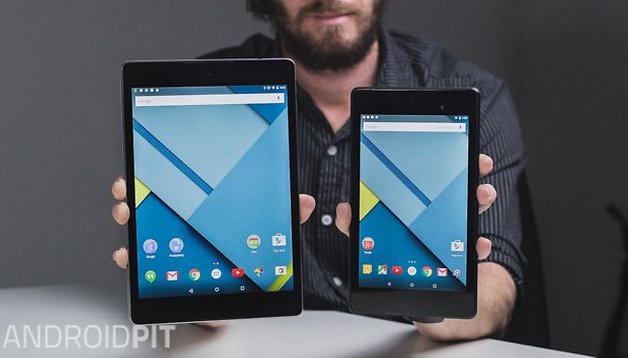

This is a very interesting question: the Nexus 7 (2013) was and still is one of the defining tablets for Android. The Nexus 9 is the latest and greatest, but has arrived with a whole host of issues. So is it worth upgrading your Nexus 7 to a new Nexus 9? Find out in our Nexus 9 vs Nexus 7 (2013) comparison.
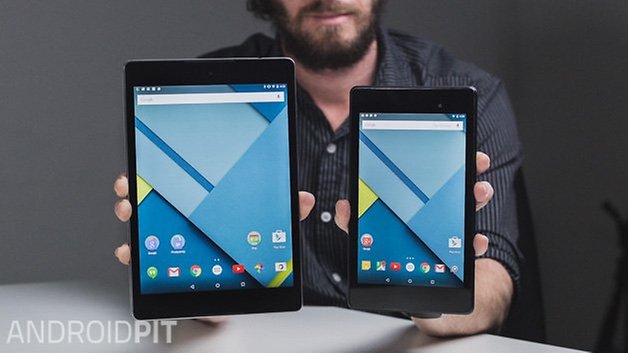
Nexus 9 vs Nexus 7 (2013): Design and Build Quality
Up front, there's not much to distinguish between the Nexus 9 and Nexus 7 (2013) other than the size and shape difference. The Nexus 9 adopts a 4:3 aspect ratio while, in comparison, the Nexus 7 (2013) is in the wide screen 16:9 format. Of course, the Nexus 9 is an 8.9-inch device and the Nexus 7 (2013) a 7-inch diagonal display.
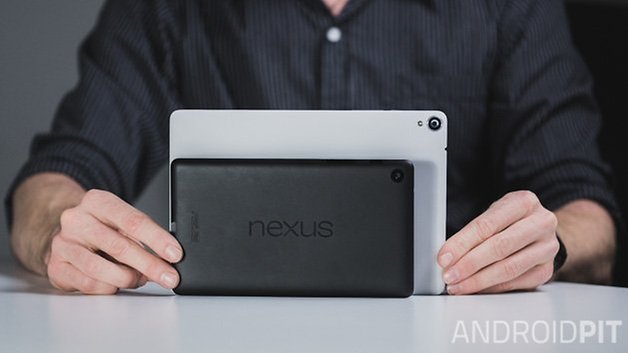
The back of the Nexus 9 is a little different depending on which color you choose: the black one is almost identical to the rubberized back of the Nexus 5, which we love. It's a bit of a fingerprint magnet though. The white Nexus 9 feels a little more papery, and you'd be hard-pressed to spot fingerprints on it. The white Nexus 9 also has a silver trim along the metallic sides, with a beveled edge that picks up a hint of bright silver. The black Nexus 9 misses out on this nice highlight, and also has slightly more flat buttons. I haven't seen the sandy beige Nexus 9, so I can't comment on its texture or feel.
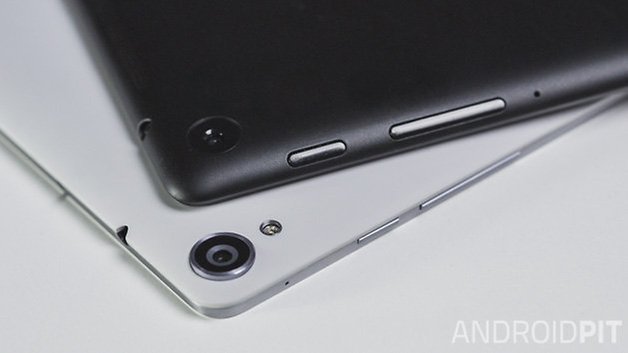
All buttons, incidentally, are in the same locations on both the Nexus 9 and Nexus 7 (2013): power button and volume rocker on the upper right, USB 2.0 charging port centered on the bottom and headphone port to the right on the upper edge. Both tablets have a camera lens squeezed into the upper corner on the back. The Nexus 7 (2013), has a rounder back, mostly towards the sides, and has a harder plastic feel than the other current Nexus devices. The Nexus 7 (2013) also has rear-mounted stereo speakers compared to the Nexus 9's front-facing stereo BoomSound speakers.
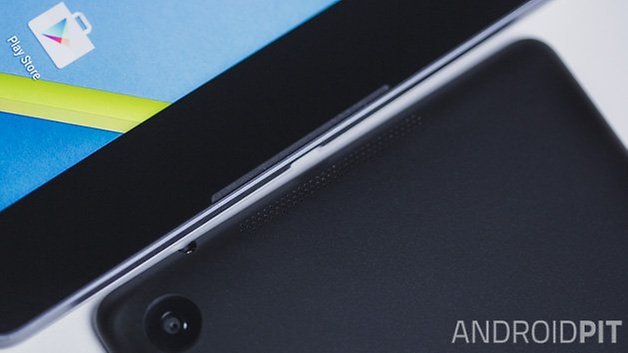
The Nexus 9 is, of course, much heavier than the Nexus 7 (2013). The Nexus 9 weighs in at 425 grams for the Wi-Fi version and 436 grams for the LTE version. The Wi-Fi only Nexus 7 (2013), on the other hand, is a very pocketable 290 grams (or 299 grams for the LTE version). Despite the excitement that ''HTC design'' brought in the lead up to the Nexus 9, the actual device feels a little flimsy and heats up unnecessarily. It looks nice enough, but it's far from being as solid as the Nexus 7 (2103)

Nexus 9 vs Nexus 7 (2013): Display
The Nexus 9 bridges the size gap between the Nexus 7 (2013) and Nexus 10, coming in just shy of nine inches at 8.9 inches on the diagonal. The Nexus 9 has the same screen resolution and aspect ratio as the iPad: 2,048 x 1,536 with a pixel density of 281 pixels per inch. The Nexus 7 (2013) rocks a straight 7-inch widescreen display with 1,920 x 1,200 resolution and 323 ppi. Both tablets utilize IPS LCD display technology.
The Nexus 9 in our hands has a cooler greenish tint to the display than the Nexus 7 (2013), which tends (a lot) towards pink. The Nexus 7 (2013) is also significantly brighter than the newer display and of course, is slightly more defined thanks to the higher pixel density. While the novelty of the 4:3 ratio is nice, especially when gaming, to have films letter-boxed defeats the purpose. Viewing angles are better on the Nexus 9 though.
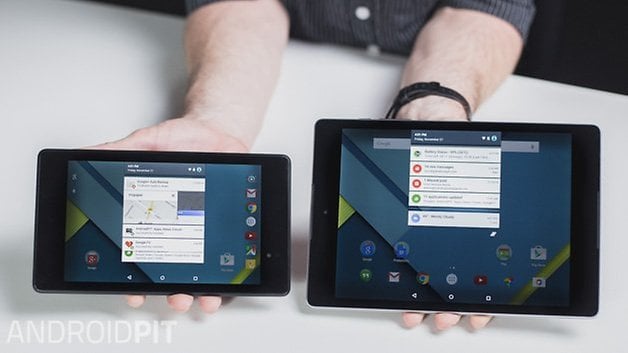
- The ultimate UI comparison: stock Android vs everything
- Android Lollipop vs Android KitKat
Nexus 9 vs Nexus 7 (2013): Software
Nothing to see here, people, move along. Both tablets are running the latest version of Android: Android 5.0 Lollipop. The Nexus 9 came with Lollipop out of the box, whereas the Nexus 7 (2013) was the delivery device for Android 4.4 KitKat. Other than the differences you'll notice because of the different aspect ratios, the stock Android experience is pretty much identical on both devices. The main difference is in performance.
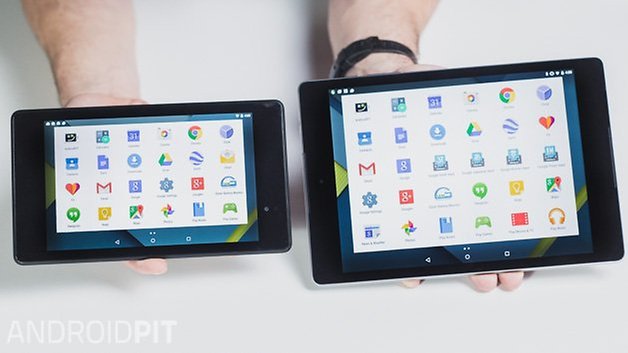
Nexus 9 vs Nexus 7 (2013): Performance
This is where things get interesting. Of course, the Nexus 9 is a full year newer than the Nexus 7 (2013), and is the first tablet to utilize Nvidia's 64-bit dual-core Tegra K1. However, despite supporting 4 GB of RAM, the Nexus 9 specs only include 2 GB of RAM, and that lack of RAM is noticeable in the stuttery performance of the tablet and the semi-frequent freezes and crashes.
The Nexus 7 (2013) packs a quad-core Snapdragon S4 Pro, clocked at 1.5 GHz, with 2 GB of RAM backing it up. This is a much weaker processor than the 2.3 GHz dual-core CPU beating inside the Nexus 9, but the Snapdragon manages just fine. In comparison, the Nexus 9 also rocks a Kepler DX1 GPU compared to the Nexus 7 (2013)'s Adreno 320.
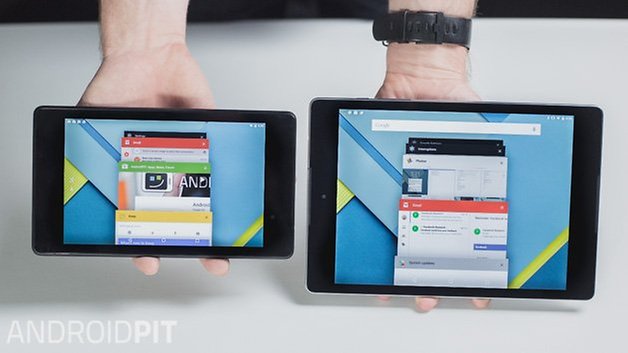
Even though Lollipop looks great and generally performs nice and smoothly, there's always the shadow of stutter and lag on the horizon with the Nexus 9, and lags of any kind on a device with this kind of specs sheet and stock Android should be absolutely unheard of. Admittedly, things have settled down a bit since the update to LRX21R. Read our Nexus 9 review for the earlier build problems.
The Nexus 7 (2013) specs, in comparison, seems to handle Lollipop pretty well for an older device. During basic operation (responsiveness, app launches, multitasking), both handle Lollipop nicely and some things are very equal (the camera app launches at exactly the same speed, for example). However, when put under more pressure, like hi-res gaming, the Nexus 9's Tegra K1 shows its strength and leaves the Nexus 7 (2013) in the dust.

Nexus 9 vs Nexus 7 (2013): Camera
Nexus cameras suck. That needs saying right up front. No one buys a Nexus for the camera, and even less so a Nexus tablet. So if you're wanting a giant tablet to take photos with you might want to look at an iPad or Galaxy Tab S instead. The Nexus 9 camera shoots at 8 MP and is the same as that found in the thoroughly mid-range Desire 610, along with a 1.6 MP front-facing camera. The Nexus 7 (2013) camera brings equally sucky 5 MP performance with a 1.2 MP selfie camera up front.
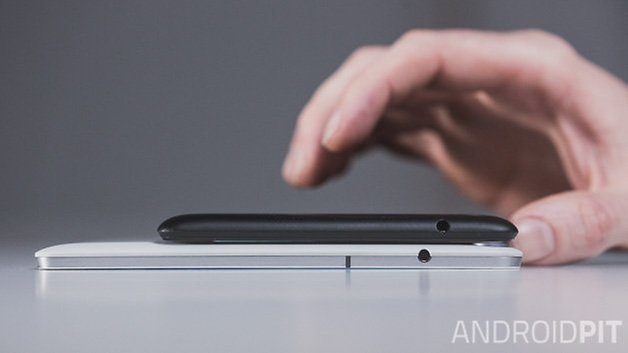
- Android 5.0 battery life: everything you need to know
- How to enable Android 5.0 Battery Saver
Nexus 9 vs Nexus 7 (2013): Battery
The Nexus 9 has a decently sized 6,700 mAh battery that fails to produce anything even resembling a reasonable amount of run time. I have to confess the battery life has improved following the recent software update, but still. The Nexus 9 battery is also painfully slow to charge.
The Nexus 7 (2013) has a much smaller 3,950 mAh battery but it powers a much smaller screen. It charges a lot faster too, thanks to its smaller capacity, but run time is a problem for both tablets, and both tend to heat up a bit under stress. At least you won't be waiting half a day while the Nexus 7 (2013) charges though. Project Volta and the Battery Saver are your two new best friends.
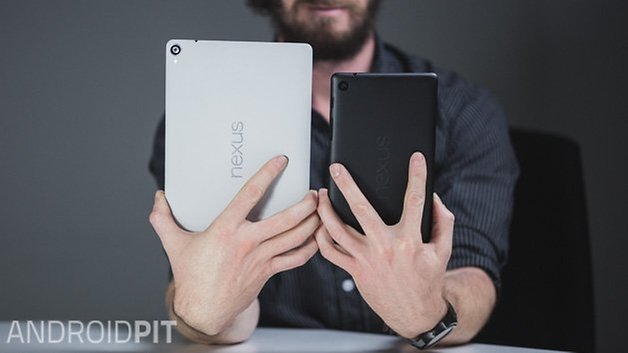
Nexus 9 vs Nexus 7 (2013): Release Date & Price
The Nexus 7 (2013) release date was July 26, 2013 and the Nexus 9 release date was November 3, 2014. The Nexus 7 (2013) price was 229 USD for the 16 GB version, 269 USD for the 32 GB version with WiFi only, and 349 USD for the 32 GB version with 4G/LTE connectivity. A white version of the tablet was added to the Play Store in December, 2013. The Nexus 9 price is 389 USD for the 16 GB version with WiFi, 479 USD for the 32 GB WiFi version and 559 USD for the 32 GB LTE version.
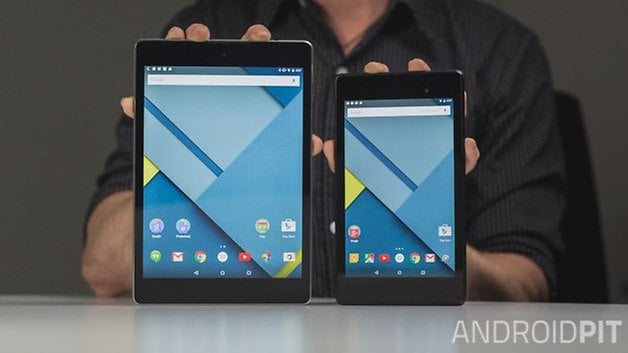
Nexus 9 vs Nexus 7 (2013): Specs
| Nexus 7 2013 | Nexus 9 | |
|---|---|---|
| OS | Stock Android 5.0 Lollipop | Stock Android 5.0 Lollipop |
| Display | 7-inch IPSLCD (1,920 x 1,200 pixels, 323 ppi) | 8.9-inch IPS LCD (2,048 x 1,536, 288 ppi) |
| Dimensions | 200 x 114 x 8.65 mm |
153.68 x 228.25 x 7.95 mm |
| Weight | 290 g (Wi-Fi) / 299 g (LTE) | 425 g (Wi-Fi), 436 g (LTE) |
| Battery | 3,950 mAh |
6,700 mAh |
| Camera | 1.2 MP front, 5 MP rear | 1.6 MP front, 8 MP rear with stabilization |
| Processor | Qualcomm Snapdragon S4 1.5GHz, Adreno 320 GPU | Nvidia Tegra K1 (64-bit), Kepler DX1 GPU |
| RAM | 2 GB | 2 GB |
| Internal Storage | 16 / 32 GB | 16 / 32 GB |
| Connectivity | GSM, HSDPA, LTE, NFC, Bluetooth 4.0, Wi-Fi 802.11 a/b/g/n, dual-band |
GSM, HSDPA, LTE (Cat. 4), NFC, Bluetooth 4.1, Wi-Fi 802.11 a/b/g/n/ac, dual-band |
| Price | 239/269/349 USD (16 GB, 32 GB Wi-Fi, 32 GB LTE) at launch. 199 USD (Amazon) | 389/479/559 USD (16 GB, 32 Wi-Fi, 32 GB LTE) |
Nexus 9 vs Nexus 7 (2013): Final Verdict
This is a tough one: as far as all-round brilliance goes, the Nexus 7 (2013) was a close-to-perfect tablet for the price. Sure, the battery wasn't great and neither was the camera, but hey, it's a Nexus so what do you expect? The Nexus 9 is significantly more expensive but seems to have a longer list of issues. It even feels flimsier as an object.
If all you want is pure speed and better specs, then the Tegra K1 in the Nexus 9 can't be beat, even if it seems like Lollipop struggles sometimes to keep up. The new aspect ratio is nice but the Nexus 9 fails to impress as a standout tablet. The Nexus 7 (2013), on the other hand, is still one of the best Android tablets around. As far as bargains go, the Nexus 7 (2013) is still pretty unbeatable, and for my money, pound for pound, I'd prefer the Nexus 7 (2013)'s quibbles over the Nexus 9's problems, even if it is the older tablet.
For your money, which is the better buy the Nexus 7 (2013) or Nexus 9?






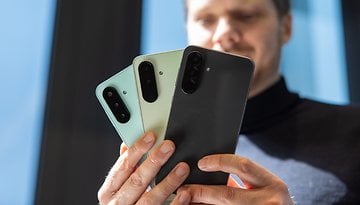













"Nexus 7 (2013) is in the wide screen 16:9"
Wrong. It has an aspect ratio of 8:5. Resolution of 1920 x 1200. Source: Nexus 7 (2013) owner.
Just bought a Nexus 7 2013 32GB for 200$ , Nexus 9 is too big
I am hoping they continue the Nexus 7. I believe a Nexus 8.9 would be too large for my suit pockets, I would love to be wrong however. I also feel cost will be an issue for some as the price for a Nexus 7 is about right for entry users to get a quality tablet with a pure Android experience. If it fit my pockets and the price was $250-$300, then yes, a larger screen would be most welcome.
Can not compare a Device (Nexus 9) if it doesn't exist for consumers to buy
This is speculation (this is TMZ journalism and it doesn't impress me)
Wait for a Device to be available, then compare it!
I have a Nexus 7 and while its very snappy I really miss not having an SDCard slot as not having one makes transferring files between devices a real pain. I would not buy a tablet again without an SD Card slot.
A simple OTG connector and a program such as Nexus Media Importer is what I use if I want to connect it to a 32 GB SD. Advances in connectivity options, via cloud as well as programs such as Snap Pea have provided other options that mitigate the importance of SD card use. Overall the ability of using an OTG cable, has made the internal SD card a non issue for me since, I am also able with the use of a powered hub, connect to much larger memory drives with the OTG cable.
the 2013 nexus 7 came with jellybean 4.3 not KitKat when I bought mine